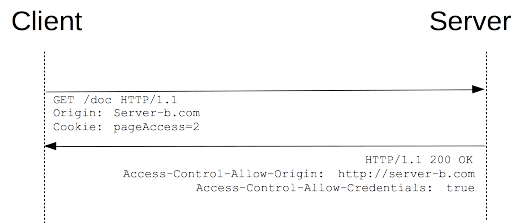I have a bunch of work that needs to be performed at specific time intervals. However, we have limited resources to do that work, each day. Therefore, I am trying to optimize the start time dates (start time dates can only be moved forward not backward) so that resources used everyday are more less similar to what we have budgeted for.
These functions are used in example below::
# Function to shift/rotate a vector
shifter <- function(x, n = 1) {
if (n == 0) x else c(tail(x, -n), head(x, n))
}
# Getting a range of dates
get_date_range <- function(current_date = Sys.Date(), next_planned_date = Sys.Date() + 5)
{
seq.Date(as.Date(current_date), as.Date(next_planned_date), "days")
}
Assume a toy example dataset :: Here task P1 starts on 14th while P2 starts on 15th. Value of zero means that no work is done for that task on that day.
# EXAMPLE TOY DATASET
datain = data.frame(dated = c("2018-12-14", "2018-12-15", "2018-12-16", "2018-12-17"),
P1 = c(1,2,0,3), P2 = c(0,4,0,6)) %>%
mutate(dated = as.character(dated))
#The amount of resources that can be used in a day
max_work = 4
# We will use all the possible combination of start dates to
# search for the best one
possible_start_dates <- do.call(expand.grid, date_range_of_all)
# Utilisation stores the capacity used during each
# combination of start dates
# We will use the minimum of thse utilisation
utilisation <- NULL # utilisation difference; absolute value
utilisation_act <- NULL # actual utilisation including negative utilisation
# copy of data for making changes
ndatain <- datain
# Move data across possible start dates and
# calculate the possible utilisation in each movements
for(i in 1:nrow(possible_start_dates)) # for every combination
{
for(j in 1:ncol(possible_start_dates)) # for every plan
{
# Number of days that are different
days_diff = difftime(oriz_start_date[["Plan_Start_Date"]][j],
possible_start_dates[i,j], tz = "UTC", units = "days" ) %>% as.numeric()
# Move the start dates
ndatain[, (j+1)] <- shifter(datain[, (j+1)], days_diff)
}
if(is.null(utilisation)) # first iteration
{
# calculate the utilisation
utilisation = c(i, abs(max_work - rowSums(ndatain %>% select(-dated))))
utilisation_act <- c(i, max_work - rowSums(ndatain %>% select(-dated)))
}else{ # everything except first iteration
utilisation = rbind(utilisation, c(i,abs(max_work - rowSums(ndatain %>% select(-dated)))))
utilisation_act <- rbind(utilisation_act, c(i, max_work - rowSums(ndatain %>% select(-dated))))
}
}
# convert matrix to dataframe
row.names(utilisation) <- paste0("Row", 1:nrow(utilisation))
utilisation <- as.data.frame(utilisation)
row.names(utilisation_act) <- paste0("Row", 1:nrow(utilisation_act))
utilisation_act <- as.data.frame(utilisation_act)
# Total utilisation
tot_util = rowSums(utilisation[-1])
# replace negative utilisation with zero
utilisation_act[utilisation_act < 0] <- 0
tot_util_act = rowSums(utilisation_act[-1])
# Index of all possible start dates producing minimum utilization changes
indx_min_all = which(min(tot_util) == tot_util)
indx_min_all_act = which(min(tot_util_act) == tot_util_act)
# The minimum possible dates that are minimum of actual utilisation
candidate_dates <- possible_start_dates[intersect(indx_min_all, indx_min_all_act), ]
# Now check which of them are closest to the current starting dates; so that the movement is not much
time_diff <- c()
for(i in 1:nrow(candidate_dates))
{
# we will add this value in inner loop so here we
timediff_indv <- 0
for(j in 1:ncol(candidate_dates))
{
diff_days <- difftime(oriz_start_date[["Plan_Start_Date"]][j],
candidate_dates[i,j], tz = "UTC", units = "days" ) %>% as.numeric()
# print(oriz_start_date[["Plan_Start_Date"]][j])
# print(candidate_dates[i,j])
#
# print(diff_days)
timediff_indv <- timediff_indv + diff_days
}
time_diff <- c(time_diff, timediff_indv)
}
# Alternatives
fin_dates <- candidate_dates[min(time_diff) == time_diff, ]
The above code runs well and produces the expected output; however it does not scale well. I have very large dataset (Two years worth of work and for more than thousand different tasks repeating in intervals) and searching through every possible combination is not a viable option. Are there ways I can formulate this problem as a standard optimization problem and use Rglpk or Rcplex or some even better solution. Thanks for inputs.
Here comes my longest StackOverflow answer ever, but I really like optimization problems. This is a variant of the so called job shop problem with a single machine, which you might be able to solve with Rcplex if you first formulate it as a LP-model. However, these formulations often scale poorly and computational times can grow exponentially, dependent on the formulation. For big problems, it is very common to use a heuristic, for example a genetic algorithm, which is what I often use in cases like this. It does not guarantee to give the optimal solution, but it gives us more control over performance vs runtime and the solution usually scales very well. Basically, it works by creating a large set of random solutions, called the population. Then we iteratively update this population by combining the solutions to make 'offspring', where better solutions should have a higher probability of creating offspring.
As a scoring function (to determine which solutions are 'better'), I used the sum of squares of the overcapacity per day, which penalizes very large overcapacity on a day. Note that you can use any scoring function that you want, so you could also penalize under-utilization of capacity if you deem that important.
The code for the example implementation is shown below. I generated some data of 200 days and 80 tasks. It runs in about 10 seconds on my laptop, improving the score of the random solution by over 65% from 2634 to 913. With an input of 700 days and 1000 tasks, the algorithm still runs within a matter of minutes with the same parameters.
Best solution score per iteration:

I also included use_your_own_sample_data, which you can set to TRUE to have the algorithm solve a simpler and smaller example to confirm that it gives the expected output:
dated P1 P2 P3 P4 P5 dated P1 P2 P3 P4 P5
2018-12-14 0 0 0 0 0 2018-12-14 0 0 3 1 0
2018-12-15 0 0 0 0 0 2018-12-15 0 3 0 0 1
2018-12-16 0 0 0 0 0 ----> 2018-12-16 0 0 3 1 0
2018-12-17 0 3 3 1 1 2018-12-17 0 3 0 0 1
2018-12-18 4 0 0 0 0 2018-12-18 4 0 0 0 0
2018-12-19 4 3 3 1 1 2018-12-19 4 0 0 0 0
I hope this helps! Let me know if you have more questions regarding this.
CODE
### PARAMETERS -------------------------------------------
n_population = 100 # the number of solutions in a population
n_iterations = 100 # The number of iterations
n_offspring_per_iter = 80 # number of offspring to create per iteration
max_shift_days = 20 # Maximum number of days we can shift a task forward
frac_perm_init = 0.25 # fraction of columns to change from default solution while creating initial solutions
early_stopping_rounds = 100 # Stop if score not improved for this amount of iterations
capacity_per_day = 4
use_your_own_sample_data = FALSE # set to TRUE to use your own test case
### SAMPLE DATA -------------------------------------------------
# datain should contain the following columns:
# dated: A column with sequential dates
# P1, P2, ...: columns with values for workload of task x per date
n_days = 200
n_tasks = 80
set.seed(1)
if(!use_your_own_sample_data)
{
# my sample data:
datain = data.frame(dated = seq(Sys.Date()-n_days,Sys.Date(),1))
# add some random tasks
for(i in 1:n_tasks)
{
datain[[paste0('P',i)]] = rep(0,nrow(datain))
rand_start = sample(seq(1,nrow(datain)-5),1)
datain[[paste0('P',i)]][seq(rand_start,rand_start+4)] = sample(0:5,5,replace = T)
}
} else
{
# your sample data:
library(dplyr)
datain = data.frame(dated = c("2018-12-14", "2018-12-15", "2018-12-16", "2018-12-17","2018-12-18","2018-12-19"),
P1 = c(0,0,0,0,4,4), P2 = c(0,0,0,3,0,3), P3=c(0,0,0,3,0,3), P4=c(0,0,0,1,0,1),P5=c(0,0,0,1,0,1)) %>%
mutate(dated = as.Date(dated,format='%Y-%m-%d'))
}
tasks = setdiff(colnames(datain),c("dated","capacity")) # a list of all tasks
# the following vector contains for each task its maximum start date
max_date_per_task = lapply(datain[,tasks],function(x) datain$dated[which(x>0)[1]])
### ALL OUR PREDEFINED FUNCTIONS ----------------------------------
# helper function to shift a task
shifter <- function(x, n = 1) {
if (n == 0) x else c(tail(x, n), head(x, -n))
}
# Score a solution
# We calculate the score by taking the sum of the squares of our overcapacity (so we punish very large overcapacity on a day)
score_solution <- function(solution,tasks,capacity_per_day)
{
cap_left = capacity_per_day-rowSums(solution[,tasks]) # calculate spare capacity
over_capacity = sum(cap_left[cap_left<0]^2) # sum of squares of overcapacity (negatives)
return(over_capacity)
}
# Merge solutions
# Get approx. 50% of tasks from solution1, and the remaining tasks from solution 2.
merge_solutions <- function(solution1,solution2,tasks)
{
tasks_from_solution_1 = sample(tasks,round(length(tasks)/2))
tasks_from_solution_2 = setdiff(tasks,tasks_from_solution_1)
new_solution = cbind(solution1[,'dated',drop=F],solution1[,tasks_from_solution_1,drop=F],solution2[,tasks_from_solution_2,drop=F])
return(new_solution)
}
# Randomize solution
# Create an initial solution
randomize_solution <- function(solution,max_date_per_task,tasks,tasks_to_change=1/8)
{
# select some tasks to reschedule
tasks_to_change = max(1, round(length(tasks)*tasks_to_change))
selected_tasks <- sample(tasks,tasks_to_change)
for(task in selected_tasks)
{
# shift task between 14 and 0 days forward
new_start_date <- sample(seq(max_date_per_task[[task]]-max_shift_days,max_date_per_task[[task]],by='day'),1)
new_start_date <- max(new_start_date,min(solution$dated))
solution[,task] = shifter(solution[,task],as.numeric(new_start_date-max_date_per_task[[task]]))
}
return(solution)
}
# sort population based on scores
sort_pop <- function(population)
{
return(population[order(sapply(population,function(x) {x[['score']]}),decreasing = F)])
}
# return the scores of a population
pop_scores <- function(population)
{
sapply(population,function(x) {x[['score']]})
}
### RUN SCRIPT -------------------------------
# starting score
print(paste0('Starting score: ',score_solution(datain,tasks,capacity_per_day)))
# Create initial population
population = vector('list',n_population)
for(i in 1:n_population)
{
# create initial solutions by making changes to the initial solution
solution = randomize_solution(datain,max_date_per_task,tasks,frac_perm_init)
score = score_solution(solution,tasks,capacity_per_day)
population[[i]] = list('solution' = solution,'score'= score)
}
population = sort_pop(population)
score_per_iteration <- score_solution(datain,tasks,capacity_per_day)
# Run the algorithm
for(i in 1:n_iterations)
{
print(paste0('\n---- Iteration',i,' -----\n'))
# create some random perturbations in the population
for(j in 1:10)
{
sol_to_change = sample(2:n_population,1)
new_solution <- randomize_solution(population[[sol_to_change]][['solution']],max_date_per_task,tasks)
new_score <- score_solution(new_solution,tasks,capacity_per_day)
population[[sol_to_change]] <- list('solution' = new_solution,'score'= new_score)
}
# Create offspring, first determine which solutions to combine
# determine the probability that a solution will be selected to create offspring (some smoothing)
probs = sapply(population,function(x) {x[['score']]})
if(max(probs)==min(probs)){stop('No diversity in population left')}
probs = 1-(probs-min(probs))/(max(probs)-min(probs))+0.2
# create combinations
solutions_to_combine = lapply(1:n_offspring_per_iter, function(y){
sample(seq(length(population)),2,prob = probs)})
for(j in 1:n_offspring_per_iter)
{
new_solution <- merge_solutions(population[[solutions_to_combine[[j]][1]]][['solution']],
population[[solutions_to_combine[[j]][2]]][['solution']],
tasks)
new_score <- score_solution(new_solution,tasks,capacity_per_day)
population[[length(population)+1]] <- list('solution' = new_solution,'score'= new_score)
}
population = sort_pop(population)
population= population[1:n_population]
print(paste0('Best score:',population[[1]]['score']))
score_per_iteration = c(score_per_iteration,population[[1]]['score'])
if(i>early_stopping_rounds+1)
{
if(score_per_iteration[[i]] == score_per_iteration[[i-10]])
{
stop(paste0("Score not improved in the past ",early_stopping_rounds," rounds. Halting algorithm."))
}
}
}
plot(x=seq(0,length(score_per_iteration)-1),y=score_per_iteration,xlab = 'iteration',ylab='score')
final_solution = population[[1]][['solution']]
final_solution[,c('dated',tasks)]
And indeed, as we expect, the algorithm turns out to be very good in reducing the number of days with a very high overcapacity:
final_solution = population[[1]][['solution']]
# number of days with workload higher than 10 in initial solution
sum(rowSums(datain[,tasks])>10)
> 19
# number of days with workload higher than 10 in our solution
sum(rowSums(final_solution[,tasks])>10)
> 1




